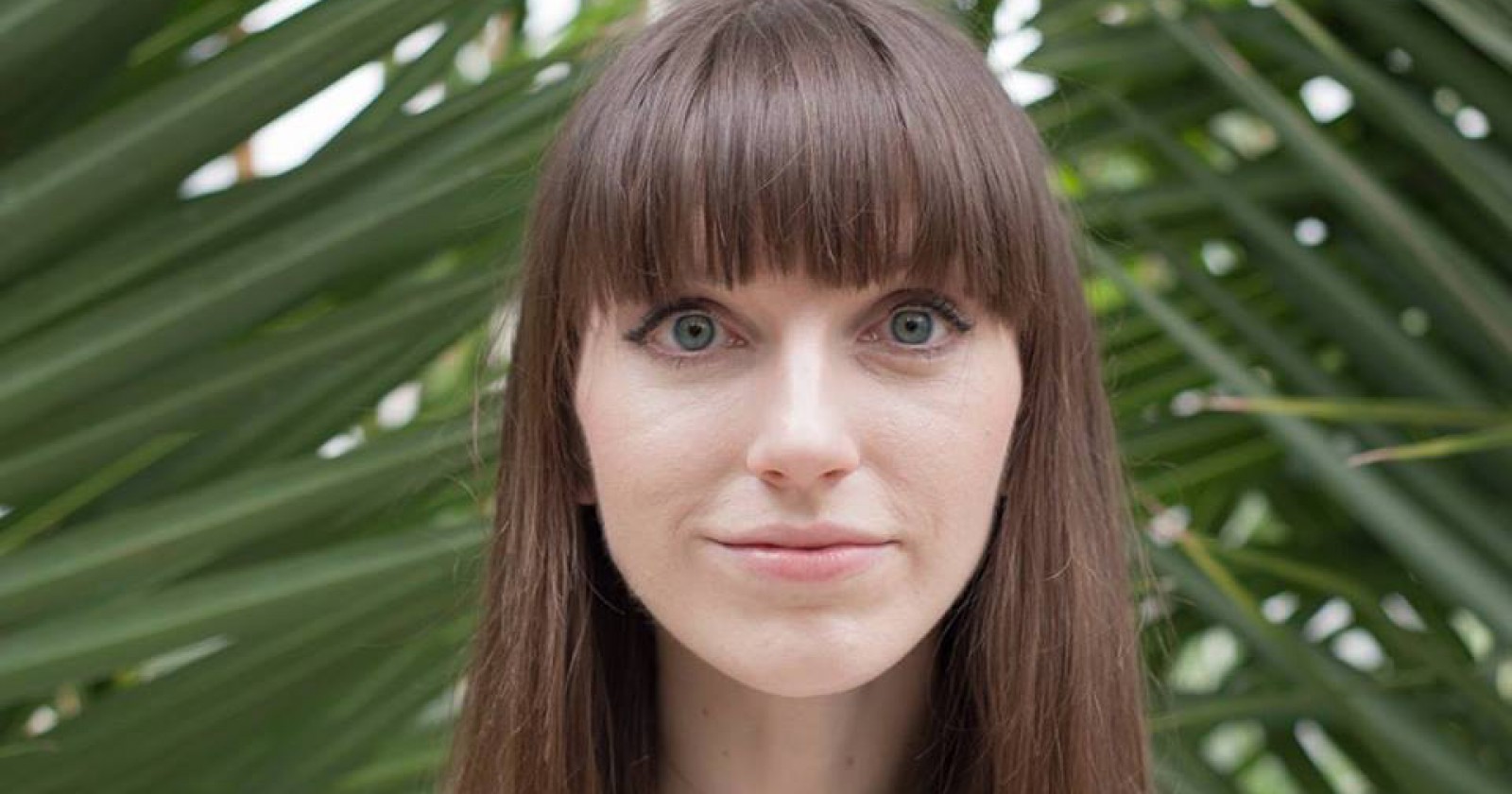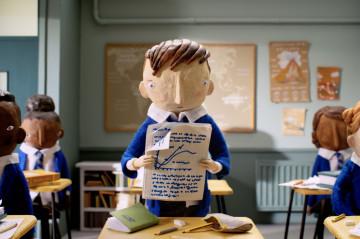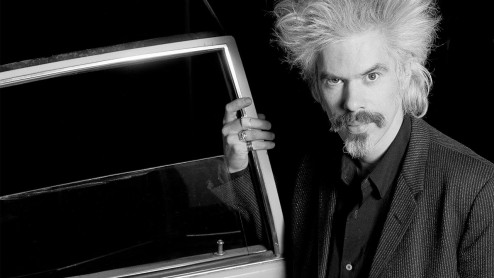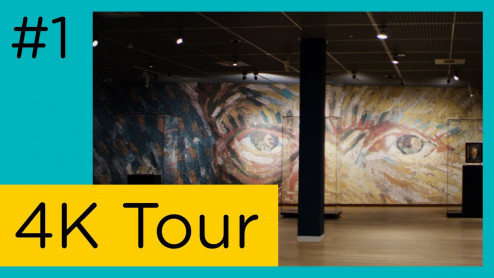
Olga Drenda | The stuff we own: Plastic bag09.10.2018
I notice things – everyday objects that we use, that surround us. We change our attitude to them, the way we treat them; some disappear, no one knows when, some return in a new role or scenery. You can read a lot from a single object – and figure out a lot about our lives, like an archaeologist from the future or aliens who landed on Earth.
A while ago, on a forest walk, picking rubbish – somehow I have more luck with it than with mushrooms –I found an ancient plastic bag with a classic radiating DomyTowarowe Centrum logo. It was full of leaves. After I stopped fuming at the genius who threw out the leaves along with the plastic, I began to wonder about the bag itself. Had it been lying there since the exotic early 90s, or did someone get rid of it after decades of hardwear?
The ubiquity and disposability of plastic, wrapping single pieces of fruit and veg in cling film, the exasperating excess of superfluous synthetics –all of this is, after all, a troublesome yet relatively recent element of our reality. Only several years ago a plastic bag was treated with respect. Bought specially, washed and dried, folded carefully and used again and again until the eyes and teeth of the smiling little girl in the printed-on photo faded away.
A few decades ago people walked around with string bags (nowadays sometimes called ‘Parisiennes’ which sounds more fancy, according to marketing pros), used for carrying apples, Madras tea and white sugar. Although they became one of the emblems of everyday life in the Eastern Bloc, the idea dates back to the pre-war Czechoslovakia. Often made of synthetic fibre with a sturdy plastic handle, stretchy and handy, almost indestructible, the string bag was a constant companion to the ever-tired, overworked „woman with groceries”; enough of a symbol that one became an exhibit at the National Museum in Krakow. Everyday trade in the People’s Republic of Poland preferred wrapping groceries in paper and returning glass bottles – a shortage economy was naturally recycling-friendly. Plastic bags were a rarity you could usually get in Pewex, a chain of shops selling otherwise unobtainable Western goods. With the brand’s name and its famous butterfly logo, or sometimes with LEGO printed on the front, the bags were a symbol of status. Anyway, back then plastic was still associated with something modern and hygienic; looking through lifestyle guidesfrom the 1960s, you will come across images of easy to clean plastic houses. The perspective of polluted soil and water lied far beyond the horizon of our imagination.
In 1991 Andrzej Grygiel, a Silesian photographer, took a photo of ladies in a street in Katowice, selling an assortment of bits and pieces under a huge sign which advertised ‘Launching Your Own Business.’ Plastic bags, then imported from Germany, were among the most sought-after goods. You can see them in the photo being carried both by the street vendors and their customers; they’re easy to spot, shiny, printed with logos of supermarket chains yet to be introduced to Poland (I remember onceoverhearing a dispute over which one is better: an ALDI bag or a BILLA bag). Shortly after there were others: ones illustrated with the word Colours and a bunch of flowers, and finally the most iconic black Hugo Boss bag. The latter is still going strong; only a few years ago it was the subject of a big newspaper story (‘It’s indestructible. You can’t burn it, it won’t rot. Put it in a washing machine and it’ll survive,’ pitched one of the vendors). When high-street clothing chains emerged in Poland and backpacks went out of vogue,plastic shopping bags adorned with the store logo became a stylish and practical accessory for fashionable students who used them to carry learning materials while they kept their money and phones in mini-handbags. In many Polish households there was a special place under the sink for a plastic bag holding other plastic bags saved just in case (there is a meme, a drawing by an artist called Rynn, asking ‘How Polish is your home?’ A stash of plastic bags is among the definingfeatures – I was able to tick that one off).
Then again, a thin plastic bag dancing in the wind is in a way a symbol of our times. Leaves packed in plastic, plastic packed in plastic, single vegetables in a supermarket put in free disposable bags. Layers of rubbish. Carpets of torn bags blown out of bins. Lifestyle books instructing readers how to reduce waste: weave it into a decorative basket; turn PET bottles into a piece of garden decor shaped like a pig. Bags saying Please, re-use me. The litter craze we all temporarily fell victims of was a kind of carnival (‘Fasting came to an end, now it’s time to spend,’ sang a now slightly forgotten comedy ensembleTrzeciOddechKaczuchy). A carnival of consuming and throwing away,because we no longer had to scrimp and save, to make do, to live by our wits. Things were finally at our fingertips – providing we could afford them, of course. But whoever could, indulged inwhat was probably the sole luxury in some people’s lives: not to be forced to squirrel stuff away, if only for a moment.
Then came the plastic bag charge. Symbolic, yet apparently meaningful, because we can see the change; shops don’t give out as many, or they decide to turn to paper. According to statistics, consumers also don’t use them as often. Incidentally, paper, a classier (more natural) material, replaced plastic as a second-hand prestigious good; paper bags with fashionable logos reach quite high prices on internet auction sites.
see also
- For the Mental Health of Our Youngest. See the Moving Animated Film "Nobody is Normal"

News
For the Mental Health of Our Youngest. See the Moving Animated Film "Nobody is Normal"
- Adam Janota Bzowski: Scaring with sound

People
Adam Janota Bzowski: Scaring with sound
- Music Straight to the Brain. Elon Musk to Reveal Details of Mysterious Neuralink Project

News
Music Straight to the Brain. Elon Musk to Reveal Details of Mysterious Neuralink Project
- Moon Rocks Auctioned Off for $855,000
News
Moon Rocks Auctioned Off for $855,000
discover playlists
-
Walker Dialogues and Film Retrospectives: The First Thirty Years
 12
12Walker Dialogues and Film Retrospectives: The First Thirty Years
-
Seria archiwalnych koncertów Metalliki
 07
07Seria archiwalnych koncertów Metalliki
-
Muzeum Van Gogha w 4K
 06
06Muzeum Van Gogha w 4K
-
 03
03
